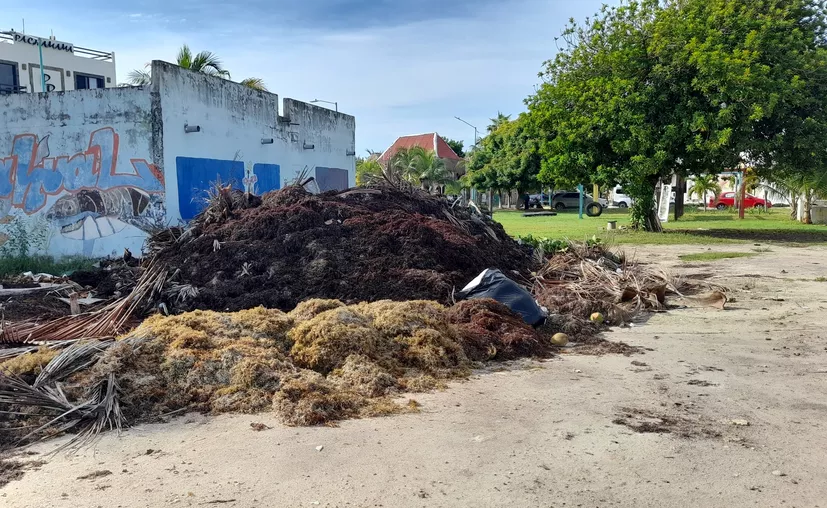Tons of sargassum rot due to lack of resources and environmental management
Quintana Roo, (October 22, 2021).- None of the seven final disposal sites of sargassum in Quintana Roo is operating, which has caused that about 40 thousand tons of sargassum that have reached the coasts of the Mexican Caribbean, in the last year, had to be deposited in clandestine dumps. thus violating the provisions of the Ministry of the Environment and Natural Resources (Semarnat).
Esteban Amaro Mauricio, hydrologist, and director of the Sargasso Monitoring Network of Quintana Roo, stated that every year, thousands of tons of sargassum rot for weeks in clandestine dumps, due to the lack of capacity to dispose of it properly.
He said that if its decomposition is not properly managed, the algae generate hydrogen sulfide, methane, and greenhouse gases, which affect human health, air quality, and the biochemical composition of the coastal system due to leachate runoff.
In the period from March to August of this year, 17 reports were presented to the Secretariat of Ecology and Environment (Sema), for the discovery of sargassum dumps, only in Cancun.
Since 2020, the state has established final disposal sites in
- Othón P. Blanco (Mahahual-Xcalak road);
- Tulum (road to Playa del Carmen);
- Benito Juárez (limits with Isla Mujeres);
- Solidaridad (highway to Cancun);
- Cozumel (north of the municipal seat);
- Felipe Carrillo Puerto (deviation to Chunpóm), and
- Lázaro Cárdenas (Kantunilkín-Chiquilá highway).
However, to date, no city council has put these places into operation.
In Othón P. Blanco, the Directorate of Ecology and Environment reported that they have not yet managed to put into operation their final disposal center for sargassum, due to the lack of environmental permits.
Municipalities do not have money or environmental permits
In her September report, Alondra Martínez Flores, former municipal director, said that the Special Projects Agency (Agepro) assigned them a place to deposit sargassum more than 22 kilometers from Mahahual, so transportation is excessively expensive. She indicated that the investment to install the geomembranes is at least 1.5 million pesos, and the city council has no money.
Representative José Guillén López, president of the commission created in the State Congress to deal with sargassum, explained that the municipalities lack resources and environmental permits, and have not been able to put their respective sargassum disposal centers into operation.
For this reason, hoteliers and municipal authorities that collect sargassum from the beaches continue to deposit it away from the sight of tourists, in abandoned properties, although Semarnat warned that they are contaminating the water tables and the environment.
Source: Sipse
TYT Newsroom



